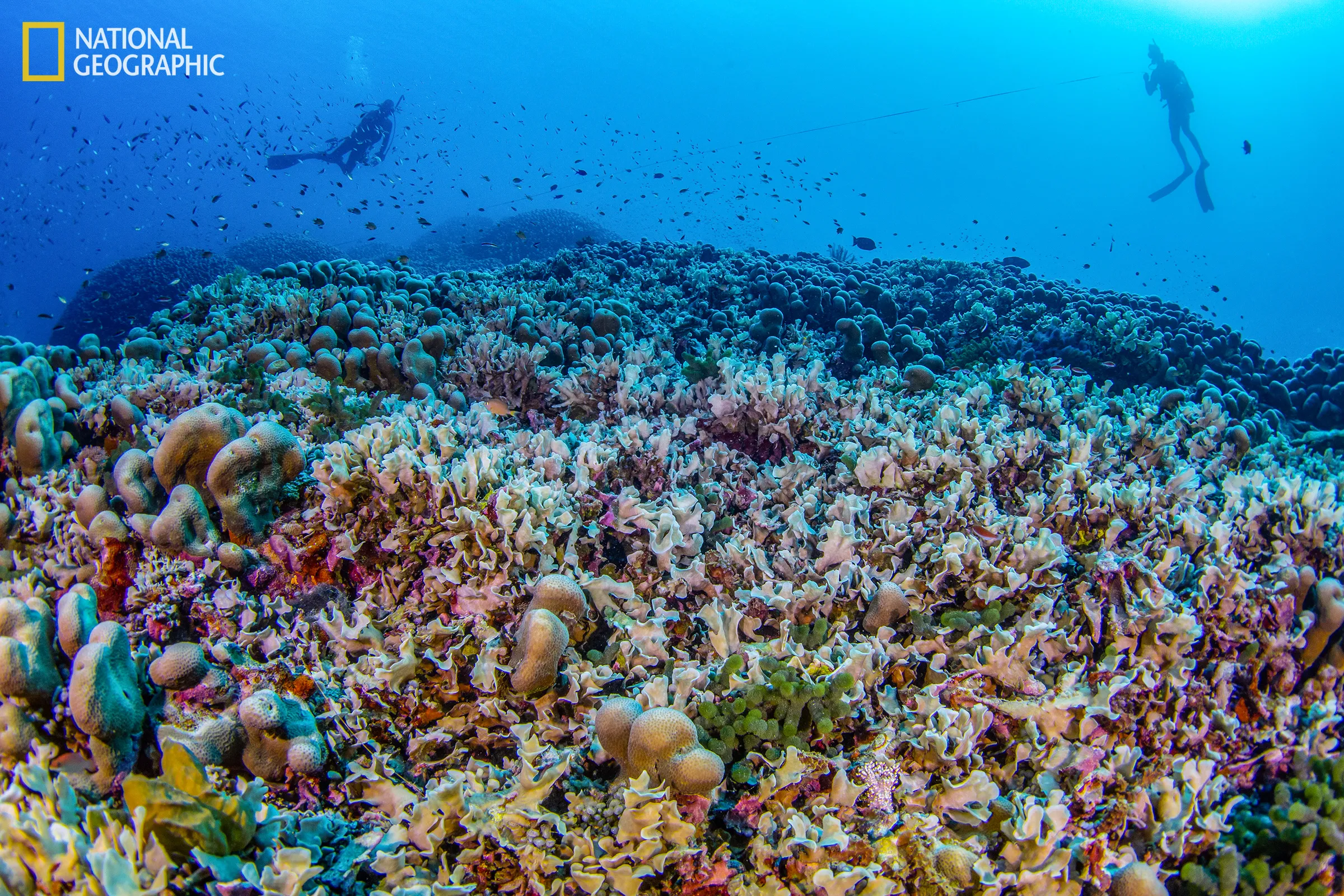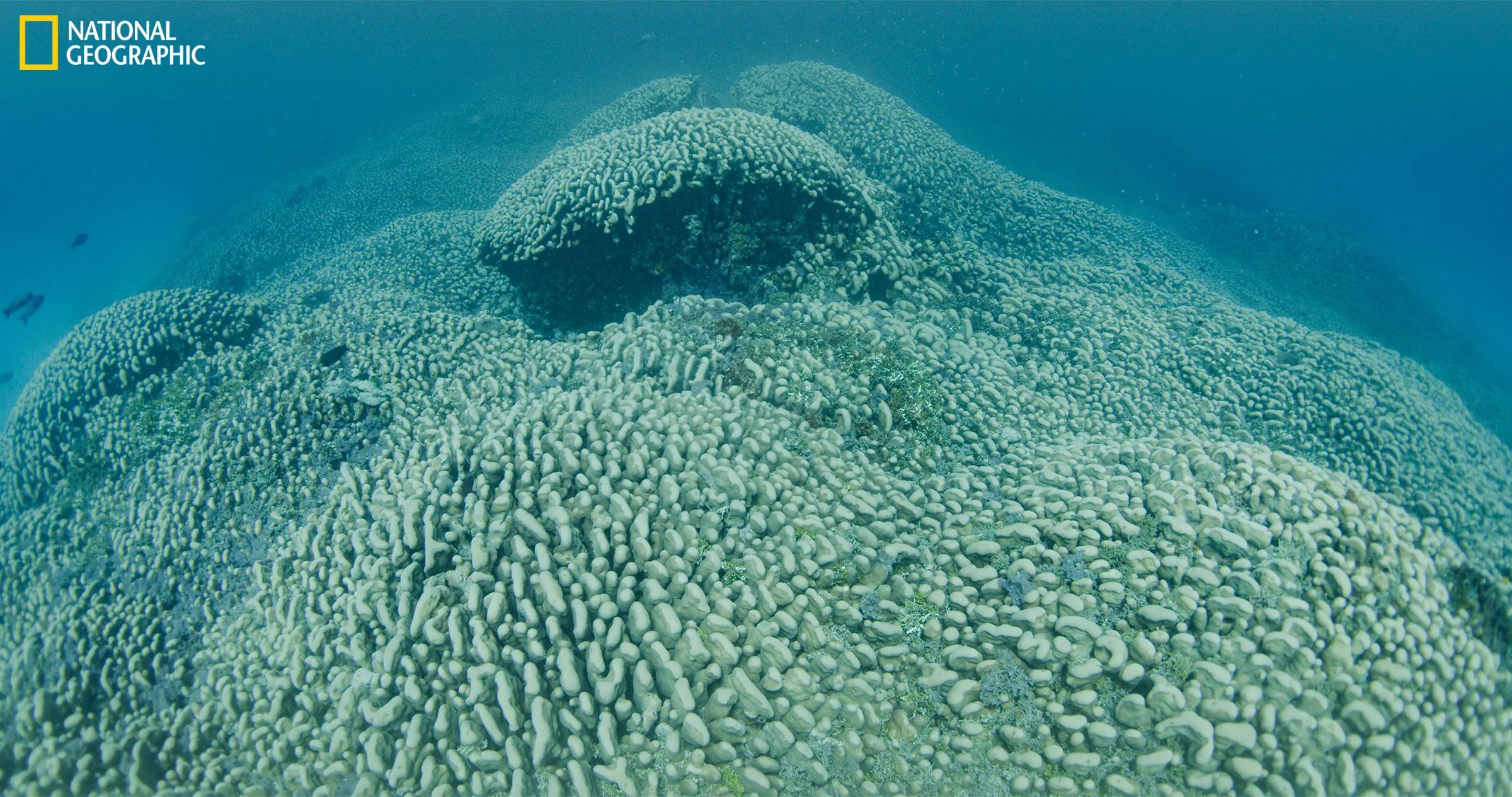At 111 feet wide, 104 feet long, 18 feet high, and 600 feet around this stunning organism in the southwest Pacific Ocean is the world’s largest known coral that was discovered by accident. It is a conglomerate of individual creatures called coral polyps that have grown over 300 years. Instead of a coral reef like the Great Barrier Reef in Australia that is a network of several colonies, this is a standalone coral that has grown uninterrupted for hundreds of years.
Inigo San Felix
The mega coral is mostly brown, but has some splashes of bright reds, yellows, and blues. The rippling waves mirror the ocean’s surface. It is a Pavona clavus and provides crustaceans and fish with shelter and a place to breed and live

Manu_San_Felix
The coral was discovered in the Three Sisters island group in Solomon Islands by team members from the National Geographic Pristine Seas team. Solomon Islands hosts the second highest coral diversity on Earth, with over 490 known hard and soft coral species.

Inigo San Felix
“Just when we think there is nothing left to discover on planet earth, we find a massive coral made of nearly one billion little polyps, pulsing with life and color,” National Geographic Explorer in Residence and founder of Pristine Seas Enric Sala said in a statement. “This is a significant scientific discovery, like finding the world’s tallest tree. But there is cause for alarm. Despite its remote location, this coral is not safe from global warming and other human threats.”

Manu San Felix
It is so colossal that it is longer than the largest animal on Earth–the blue whale–and can be seen from space. However, team members initially thought that it might be a shipwreck due to its large size. When underwater cinematographer Manu San Félix dove down for a closer look, he realized it was a particularly big Pavona clavus. Despite the gargantuan size, the coral has never been documented.

Steve Spence
“The ocean provides for our livelihoods and has contributed so much to our national economy and communities,” said Solomon Islands Prime Minister Jeremiah Manele. “Our survival depends on healthy coral reefs, so this exciting discovery underlines the importance of protecting and sustaining them for future generations.”


